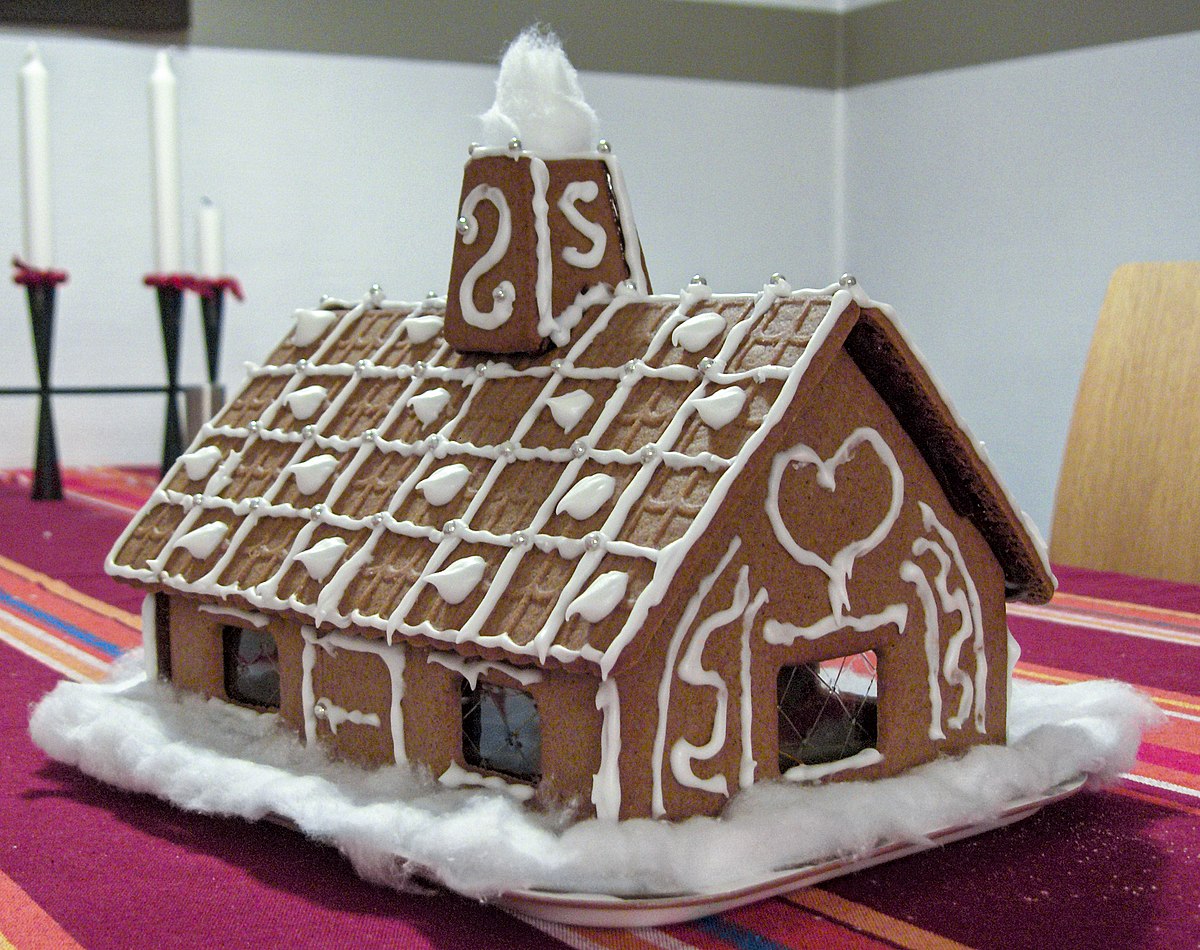Christmas time is a wonderful time. A wonderful time of the year.
Filled with smiles and laughter and fun all around.
With cakes, pies, and cookies your joy will abound.
Gingerbread cottages sparkle with snow,
Yet their fate is to wait til in the garbage they go.
Why not instead, with joy and with glee,
Make a gingerbread cookie? It's easy you'll see.
All you need is some time—and an orange or two—
And then for Christmas treat fixes, your friends will come to you.
I really do love gingerbread. I apparently like it so much that I wrote a (really bad) poem about it. What I don't like are hard "gingerbread" crackers over-flavored with cloves and allspice whose sole reason for existance is to be turned into amateur building material.
This is very pretty indeed, but I don't think that anyone would ever want to eat something that was used as building material, even if royal icing hadn't been used as both mortar and decoration.
What is the alternative? Well, "luckily" bakery mix suppliers have come to the "rescue".
What is the problem with this, you ask? Well, to be honest, there isn't a whole lot wrong with these, other than the fact that they are primarily intended as cake mixes. The cookies they make would probably be edible, and you problably couldn't use them for building houses for elf-making shoes. But they still have cloves or allspice in them, and I just don't like that.
So one day while I was pondering the sadness that is composed of clove-ridden gingerbread (why they call it gingerbread when all you can taste is the cloves and cinnamon anyway I will never undersand), I received a vision of deliciousness and my stomach was filled with the glory that...
...
...
...
...
Okay you got me. I didn't receive a vision. But I did have the thought that gingerbread is a really good winter flavor, and that orange is actually a really good winter flavor (isn't that when you find oranges in the grocery store), and what would happen if I put them together? This was the result.
This has since become one of my favorite cookies. It actually reminds me a lot of Nüremberger Lebkuchen, which I occasionally had when I lived in German-speaking Europe. The cookie isn't super sweet, which sets it a little apart from most American cookies, but it also means that the flavor isn't marred by cloying sweetness even though the cookie is glazed.
And, without further ado, here is my recipe for Glazed Orange Gingerbread Cookies.





Hey Sam, Sending hugs!
ReplyDelete